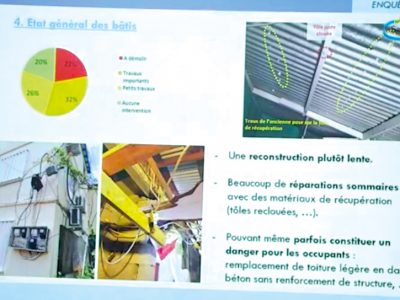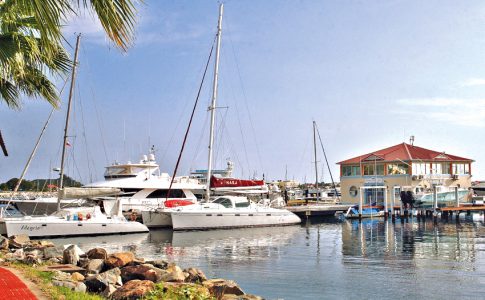During the territorial council of Wednesday July 11, Magali Moulin, architect and urban planner in Guadeloupe came to present the results of the diagnosis of the building that she carried out with four of her colleagues between mid-March and mid-May in Saint-Martin . “The idea of the study was to make an inventory of the condition of the building and the situation of the occupants. It lasted two months, with a four-week field survey carried out by five architects accompanied by four COM agents, ”she said in the introduction.
This study was funded by the State to the tune of 100 euros and coordinated by the inter-ministerial delegation for reconstruction within the framework of a close partnership with the community. The data, which constitute an internal document, were made available to the COM in early June.
The survey covered 2751 dwellings and allowed to meet 1707 households, representing 2516 people in five neighborhoods: Sandy Ground, Quartier d'Orléans, Saint James, Agrément and Grand-Case
The study reveals that many dwellings are badly damaged and that the owners have often done no work on them. Tenants carry out security works there, often limited to unsustainable summary repairs. The investigators identified 221 people housed in conditions identified as unfit for habitation (water infiltration, no toilets, no water, etc.), or 15,8% of the buildings surveyed. The very limited housing supply reduces the possibilities of rehousing and forces tenants to accept sometimes indecent housing conditions, for sometimes high rents.
The vast majority of the structures of the buildings observed are made of reinforced concrete or masonry (87%). 17% of the structures impacted are identified as severely and very severely damaged or destroyed (9,7% of the building presents a danger: risk of collapse, slab falling apart, etc.).
The damage materialized by: large cracks, badly damaged chaining, bare foundations or maritime facades torn off on certain islets on the seafront.
Among the dwellings observed by the investigators, sheet metal roofs predominate (67%), against 33% of concrete slabs.
In addition, 13.5% of the building studied is still covered: 95 fully covered roofs and 271 partially. The architects have estimated the sheet metal needs at a minimum of 260 m000, according to the cadastre.
(More details on www.soualigapost.com)
6,470 total views











No comments